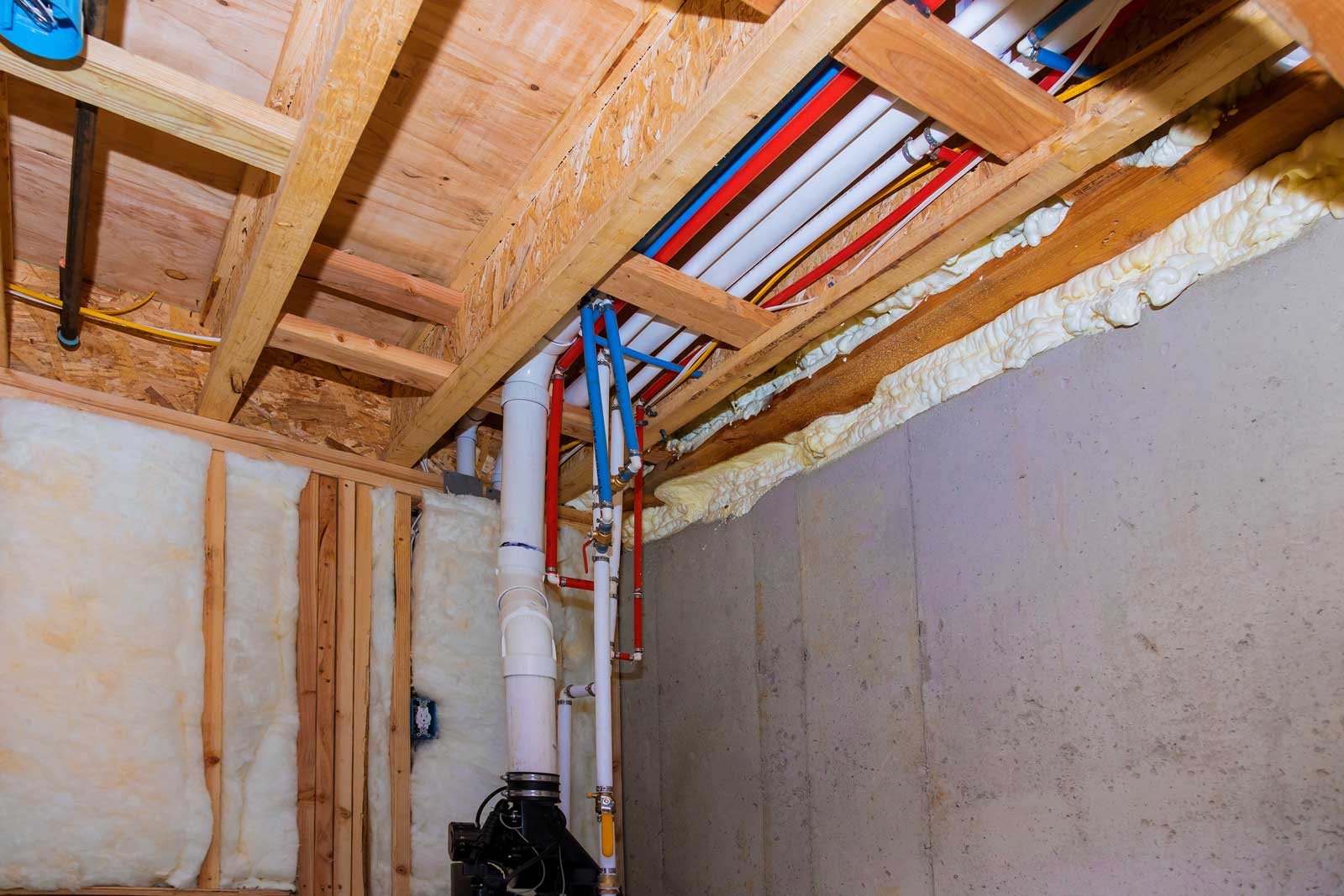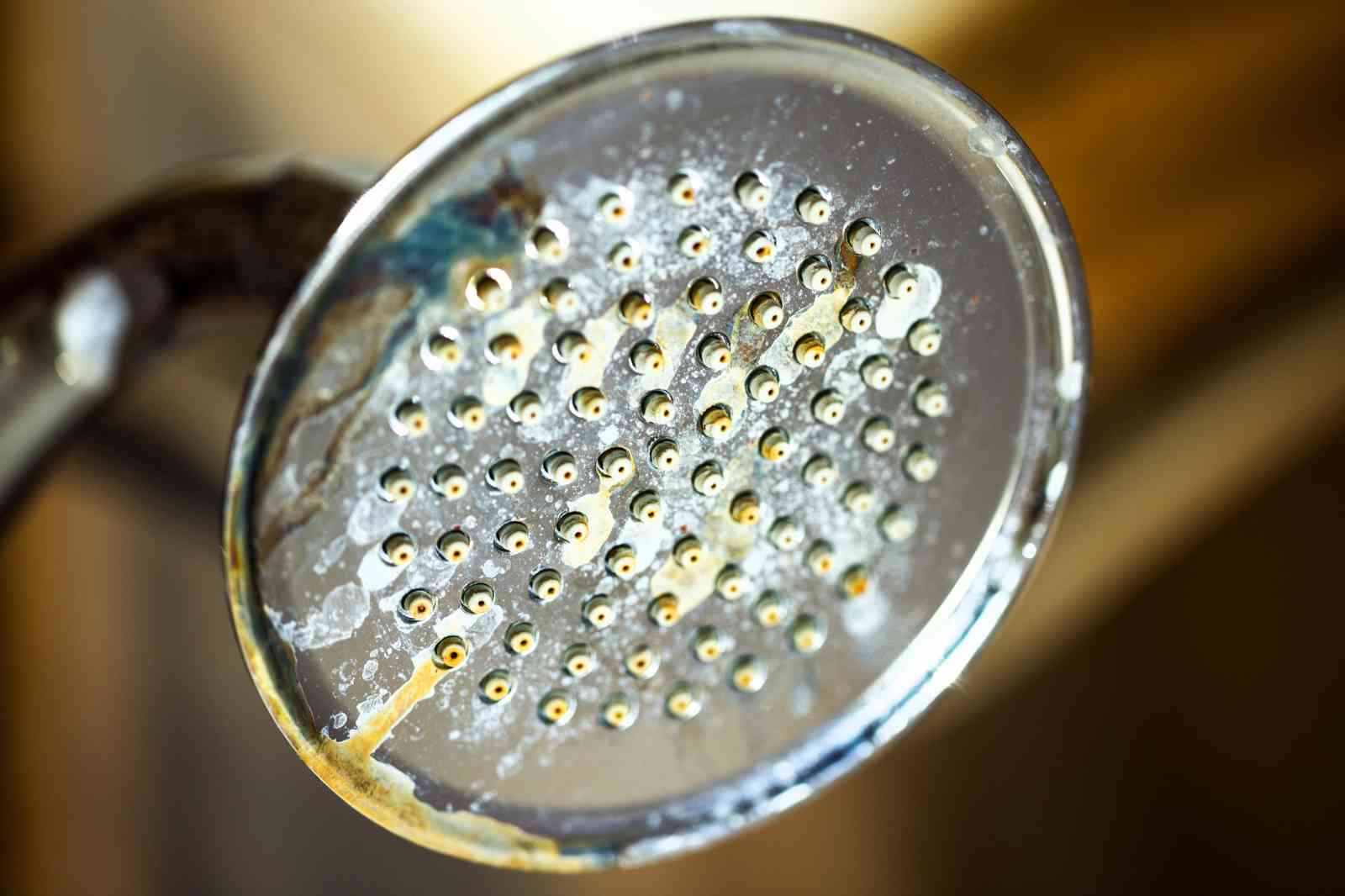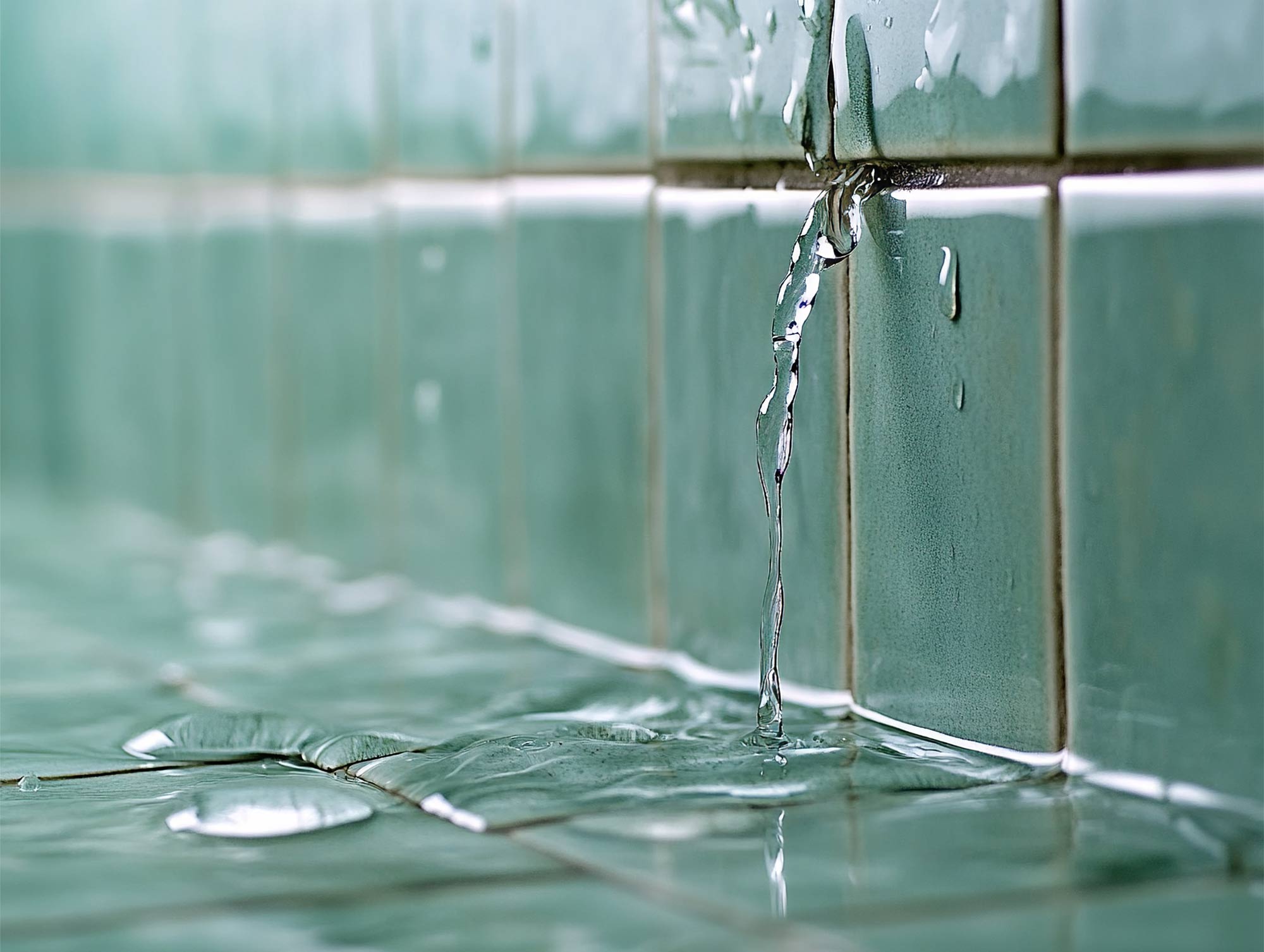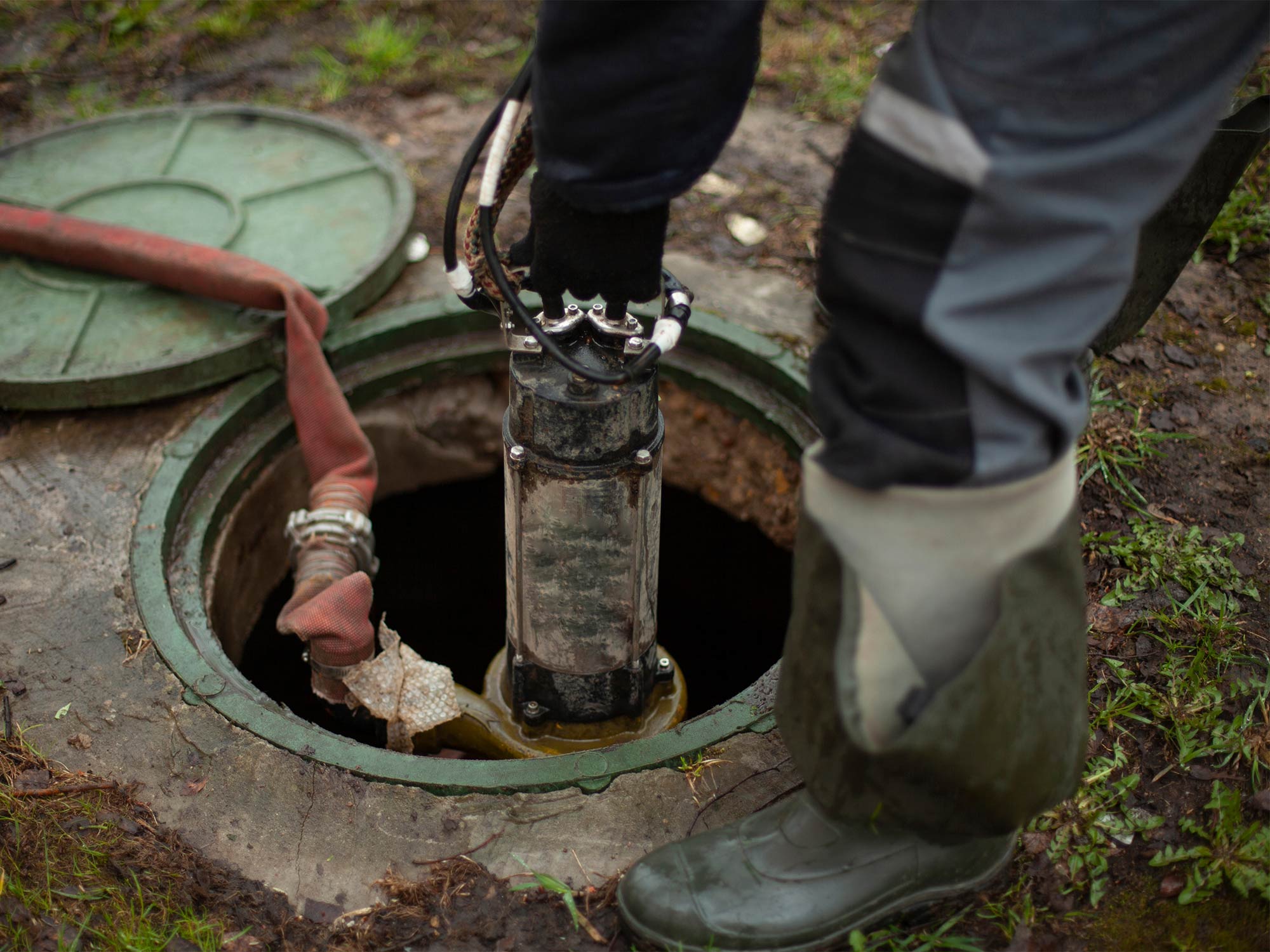Your home’s plumbing system resembles its circulatory system. Without it, you wouldn’t have access to clean water or efficient waste removal. However, many homeowners overlook their plumbing until a problem arises. Why wait? Ignoring signs of a failing plumbing system can lead to major headaches down the line. In this post, we will explore key indicators that your home may need a home repipe, the repiping plumbing process, and the benefits of tackling this project sooner rather than later.
Signs That Indicate You May Need A Home Repipe
Low Water Pressure
Low water pressure is one of the most noticeable signs that your plumbing system needs attention. If you’ve noticed a significant drop in water pressure when taking a shower or using the sink, it may be due to corroded pipes. Corrosion can narrow the internal diameter of the pipes, restricting water flow and causing pressure to drop. While low water pressure can also be caused by other factors, such as a clogged aerator or local water supply issues, persistent problems usually point to faulty plumbing.
Another potential cause of low water pressure is leaking pipes. Even small leaks can affect your water pressure and, over time, can cause structural damage to your home. It’s important to address the root cause by having a professional inspect your plumbing system.
Lastly, mineral buildup from hard water can also result in low water pressure. Hard water leaves deposits inside your pipes, gradually reducing their capacity to deliver water efficiently. If you’re experiencing low water pressure, it’s crucial to investigate further to determine if you should contact repipe specialists.
Rusty or Discolored Water
Have you noticed rusty or discolored water coming out of your faucets? This is not only unappealing but can also be a sign of corroded pipes. Rusty water is typically indicative of iron pipes that have rusted from the inside, releasing particles into your water supply. Consuming or bathing in rusty water is not ideal, and this issue should be addressed promptly.
Discoloration can also occur from sediment buildup in the pipes. When plumbing starts to deteriorate, bits of metal, minerals, and other particles can mix with your water. This not only affects the water’s appearance but can also alter its taste and smell.
In some cases, discolored water may stem from your hot water heater. If you notice rusty water only when using hot water, it might be an issue with your heater rather than the pipes. However, if both hot and cold water are affected, it’s likely time to consider going with the repipe experts and repiping your house.
Frequent Leaks
Frequent leaks are another strong indicator that your plumbing system is failing. While an occasional leak might just require a simple fix, persistent leaks usually point to a more significant issue. Older pipes, especially those made from outdated materials like galvanized steel, can develop leaks over time due to corrosion and wear.
Leaks often start small and may go unnoticed, but they can quickly escalate into major problems. Beyond the obvious water damage, leaking pipes can create an environment for mold growth, which poses serious health risks. Additionally, continuous leaks can lead to higher water bills, wasting both water and money.
If you find yourself constantly dealing with leaks or patching up small problems, it may be more cost-effective in the long run to repipe your home. A new plumbing system can save you from the hassle and expense of frequent repairs.
Old Age of Existing Pipes
The age of your plumbing system plays a crucial role in its performance and reliability. Most pipes have a lifespan of 20 to 50 years, depending on the material. For instance, galvanized steel pipes, commonly used in homes built before the 1960s, tend to corrode and fail after about 40 years. Copper pipes, on the other hand, can last up to 50 years or more.
If your home is older and still has its original plumbing, it’s likely time for an upgrade. Even if you haven’t experienced significant issues yet, aging pipes are more prone to leaks, corrosion, and other problems. An inspection by a professional plumber can help determine the condition of your pipes and whether a whole house repipe job is necessary.
Replacing old pipes is an investment in your home’s future, ensuring that you won’t have to deal with unexpected plumbing emergencies. Newer materials like PEX and copper offer improved durability and performance, giving you peace of mind.
You Find Polybutylene Pipes in Your Home
Polybutylene pipes were commonly used in homes built between the 1970s and 1990s. However, they have since been found to be highly problematic. These pipes tend to degrade and become brittle over time, leading to frequent leaks and failures. If you discover polybutylene pipes in your home, it’s essential to replace them as soon as possible.
The main issue with polybutylene pipes is their reaction to oxidants in water supplies, which causes them to break down. This degradation often occurs out of sight, behind walls and under floors, making it difficult to detect until a significant problem arises.
Replacing polybutylene pipes with more reliable materials, such as copper or PEX, can prevent potential water damage and improve the overall safety and functionality of your plumbing system.
The Repiping Plumbing Process
Overview of What A Repipe Service Involves
Repiping a home involves replacing the existing plumbing system with new pipes. This process can be extensive, as it requires accessing walls, floors, and ceilings to remove old pipes and install new ones. While it may sound daunting, professional plumbers use advanced techniques and tools to minimize disruption and complete the job efficiently.
The first step in the repiping process is a thorough inspection of your current plumbing system. This helps identify the extent of the damage and determine the best course of action. Once the inspection is complete, the plumber will outline the scope of the project, including the materials to be used and the estimated timeline.
During the repiping plumbing process, water will be temporarily shut off to allow for the removal and replacement of pipes. The plumber will then carefully install the new pipes, ensuring they are properly connected and secure. After the installation is complete, the system will be tested to ensure everything is functioning correctly.
Materials Used for A Repipe
When it comes to a repipe service, there are several materials to choose from, each with its own advantages and disadvantages. Two of the most popular options are copper and PEX.
PEX Pipes:
PEX (cross-linked polyethylene) is a flexible and cost-effective alternative to copper. PEX pipes are easy to install, even in tight spaces, and are resistant to scale and chlorine, reducing the risk of corrosion. They are also highly durable and can withstand extreme temperatures. One of the main benefits of PEX is its flexibility, allowing it to expand and contract without bursting in freezing conditions. However, PEX may not be suitable for outdoor use due to its sensitivity to UV light.
Both copper and PEX have their own set of benefits, and the choice ultimately depends on your specific needs and budget. Consulting with a professional plumber can help you make an informed decision.
Benefits of Repiping A House in Florida
Improved Water Quality
One of the most significant benefits of repiping your home is the improvement in water quality. Old, corroded pipes can introduce contaminants into your water supply, affecting its taste, smell, and safety. By replacing these pipes with new, high-quality materials, you can ensure that your water is clean and safe for consumption.
New pipes are less likely to leach harmful substances into your water, reducing the risk of health issues. Additionally, materials like copper and PEX are resistant to corrosion and buildup, maintaining the purity of your water over time.
Improved water quality not only enhances your daily life but also provides peace of mind, knowing that your family is consuming safe and clean water.
Increased Home Value
Upgrading your plumbing system can significantly increase the value of your home. Prospective buyers are often concerned about the condition of a property’s plumbing, and a recently repiped home can be a major selling point. It demonstrates that the home has been well-maintained and is less likely to have plumbing issues in the near future.
In addition to making your home more attractive to buyers, a new plumbing system can also boost its appraisal value. This can be particularly beneficial if you plan to refinance your mortgage or take out a home equity loan.
Investing in re-pipe specialists is not only a smart move for your immediate comfort and safety but also a strategic decision for your home’s long-term value.
Water and Energy Efficiency
Older plumbing systems are often less efficient, leading to wasted water and higher utility bills. Leaky pipes, corroded fittings, and inefficient materials can all contribute to water loss and increased energy consumption. By repiping your home, you can significantly improve its water and energy efficiency.
New pipes are designed to minimize leaks and withstand high pressure, ensuring that water flows smoothly and efficiently throughout your home. This can reduce your water usage and lower your monthly bills.
Additionally, improved water flow can enhance the performance of your water heater, reducing the amount of energy needed to heat water. This not only saves you money but also reduces your environmental footprint.
How to Determine If You Need A Repiping Service
Importance of a Professional Inspection
Determining whether your home needs a repiping plumber for an inspection is not always straightforward. While some signs, like frequent leaks and discolored water, are obvious, others may be less noticeable. That’s why it’s essential to have a professional inspection conducted by a licensed plumber.
A professional plumber has the expertise and tools to thoroughly assess your plumbing system’s condition. They can identify hidden issues, such as internal corrosion or hairline cracks, that may not be visible to the untrained eye. Based on their findings, they can recommend the best course of action, whether it’s spot repairs or a complete repipe.
Regular inspections are also crucial for preventative maintenance. Catching problems early can save you from costly repairs and extensive water damage down the line.
DIY Checks You Can Perform
While a professional inspection is vital, there are also some basic checks you can perform to monitor your plumbing system’s health. Regularly inspecting your pipes and fixtures can help you catch potential issues early and decide when it’s time to call in a professional.
Visual Inspection & Leak Detection:
Look for visible signs of corrosion, rust, or leaks on exposed pipes. Pay attention to discoloration, damp spots, or mold growth around your plumbing fixtures. These can indicate underlying problems that need to be addressed.
Water Pressure:
Monitor the water pressure in your home. If you notice a sudden drop or inconsistent pressure, it could be a sign of a plumbing issue. Test the water pressure in different parts of your home to identify any specific areas of concern.
Water Quality:
Observe the quality of your water. Discoloration, unusual taste, or odor can indicate problems with your pipes. If you notice any changes in your water quality, it’s essential to investigate further.
By performing these simple checks regularly, you can stay proactive about your plumbing system’s health and address issues before they escalate.
Conclusion
Your home’s plumbing system is essential to your daily life, providing clean water and efficient waste removal. However, over time, pipes can deteriorate, leading to various issues that affect your water quality and overall comfort. Recognizing the signs that indicate a need for repiping is crucial for maintaining a safe and functional plumbing system.
From low water pressure and discolored water to frequent leaks and the age of your pipes, there are several indicators that it may be time to repipe your home. Understanding the repiping service process and the benefits it offers, such as improved water quality, increased home value, and enhanced efficiency, can help you make an informed decision.
If you suspect that your home may need a repiping service, don’t hesitate to schedule a professional inspection. A licensed plumber can provide a thorough assessment and recommend the best course of action to ensure your plumbing system is in top condition. Read on if you would like to prepare your home for a repipe.
Taking proactive steps to address plumbing issues can save you from costly repairs and provide peace of mind, knowing that your home is equipped with a reliable and efficient plumbing system. Don’t wait for problems to worsen—take action today and enjoy the benefits of a well-maintained plumbing system.



